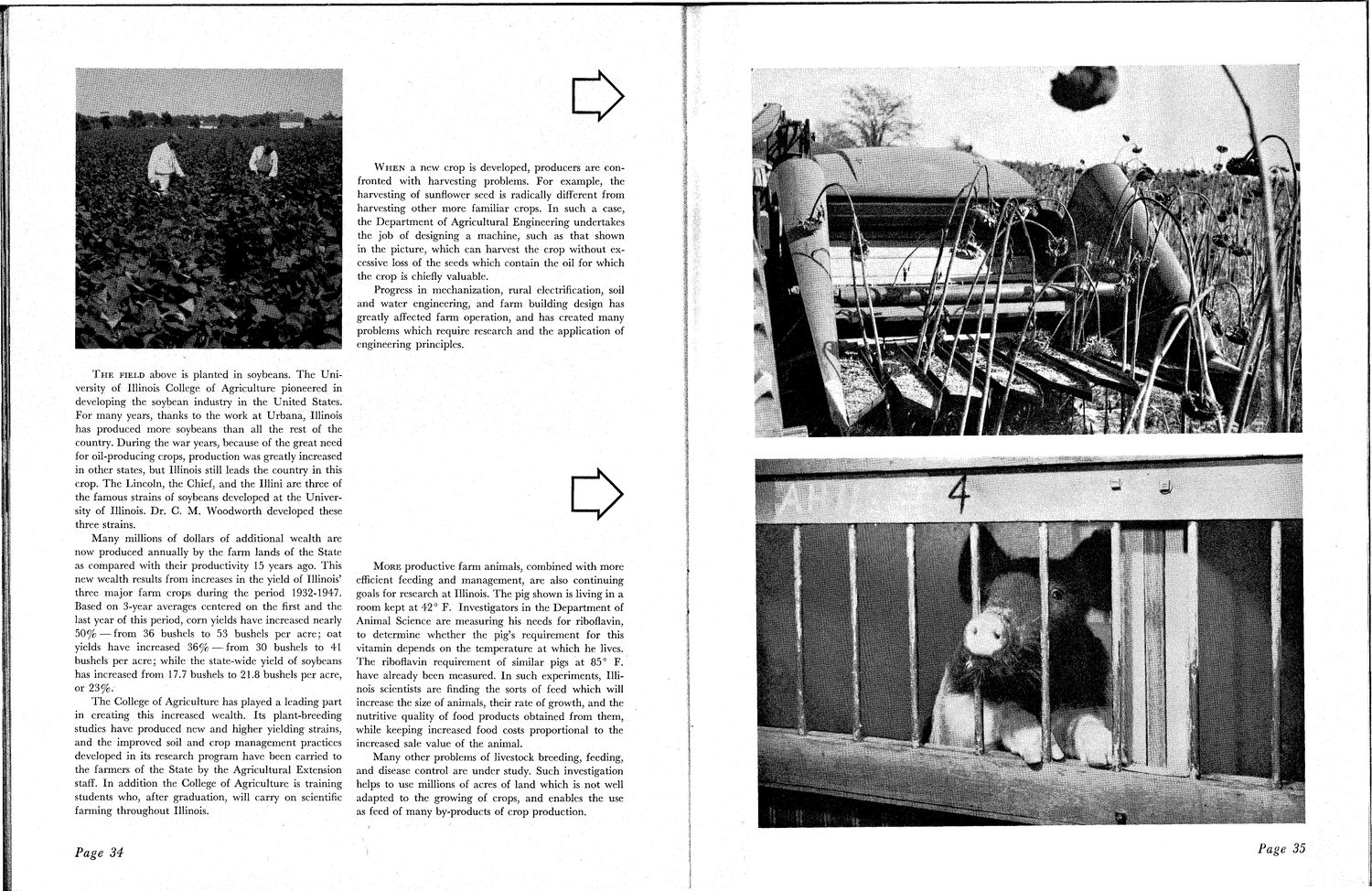| |
| |
Caption: Book - Research on Campus (1949)
This is a reduced-resolution page image for fast online browsing.

EXTRACTED TEXT FROM PAGE:
O W H E N a new crop is developed, producers are confronted with harvesting problems. For example, the harvesting of sunflower seed is radically different from harvesting other more familiar crops. In such a case, the Department of Agricultural Engineering undertakes the job of designing a machine, such as that shown in the picture, which can harvest the crop without excessive loss of the seeds which contain the oil for which the crop is chiefly valuable. Progress in mechanization, rural electrification, soil and water engineering, and farm building design has greatly affected farm operation, and has created many problems which require research and the application of engineering principles. T H E FIELD above is planted in soybeans. T h e University of Illinois College of Agriculture pioneered in developing the soybean industry in the United States. For many years, thanks to the work at Urbana, Illinois has produced more soybeans than all the rest of the country. During the war years, because of the great need for oil-producing crops, production was greatly increased in other states, but Illinois still leads the country in this crop. T h e Lincoln, the Chief, and the Illini are three of the famous strains of soybeans developed at the University of Illinois. Dr. C. M. Woodworth developed these three strains. Many millions of dollars of additional wealth are now produced annually by the farm lands of the State as compared with their productivity 15 years ago. This new wealth results from increases in the yield of Illinois' three major farm crops during the period 1932-1947. Based on 3-year averages centered on the first and the last year of this period, corn yields have increased nearly 5 0 % — f r o m 36 bushels to 53 bushels per acre; oat yields have increased 3 6 % •— from 30 bushels to 41 bushels per acre; while the state-wide yield of soybeans has increased from 17.7 bushels to 21.8 bushels per acre, or 2 3 % . T h e College of Agriculture has played a leading part in creating this increased wealth. Its plant-breeding studies have produced new and higher yielding strains, and the improved soil and crop management practices developed in its research program have been carried to the farmers of the State by the Agricultural Extension staff. In addition the College of Agriculture is training students who, after graduation, will carry on scientific farming throughout Illinois. O M O R E productive farm animals, combined with more efficient feeding and management, are also continuing goals for research at Illinois. T h e pig shown is living in a room kept at 42° F. Investigators in the Department of Animal Science are measuring his needs for riboflavin, to determine whether the pig's requirement for this vitamin depends on the temperature at which he lives. The riboflavin requirement of similar pigs at 85° F. have already been measured. In such experiments, Illinois scientists are finding the sorts of feed which will increase the size of animals, their rate of growth, and the nutritive quality of food products obtained from them, while keeping increased food costs proportional to the increased sale value of the animal. Many other problems of livestock breeding, feeding, and disease control are under study. Such investigation helps to use millions of acres of land which is not well adapted to the growing of crops, and enables the use as feed of many by-products of crop production. Page 34
| |